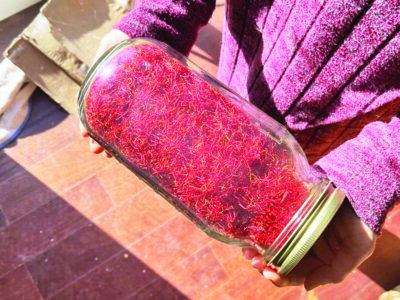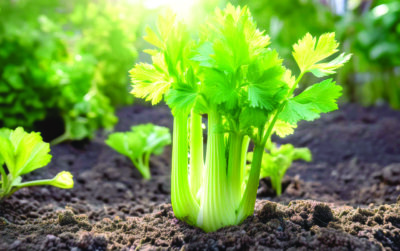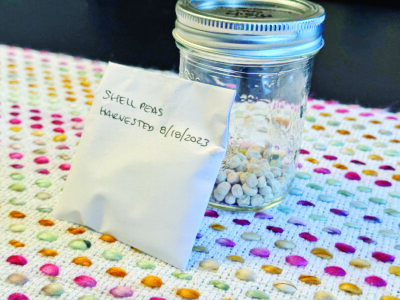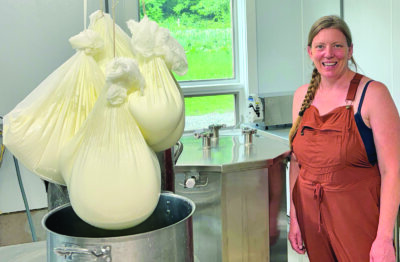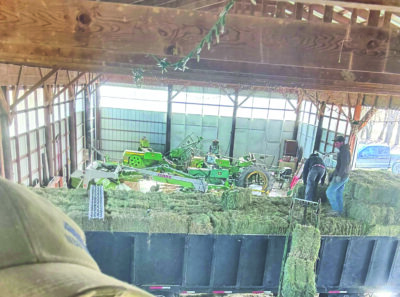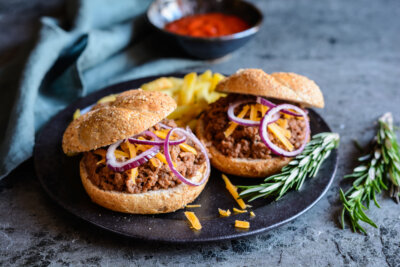Traditional New England of Boston brown bread is a treat
The traditional Saturday night supper of beans when I was growing up often included Boston brown bread. This was the comfort meal, a bowl of stewed yellow-eyed beans and a biscuit or brown bread, an oddity that delighted us as children because the breads were baked in round coffee or bean cans, so their shape was unique.
This bread has its roots in Colonial America and has a unique flavor and texture — moist, definitely savory, with texture from the cornmeal, but with only a hint of the molasses and sugar it contains. While there are sweet ingredients, it is most definitely not a sweet bread. Its flavor reads as a savory when served with butter and a bowl of beans. The raisins are a little surprise now and then.
Yet, you can add some cream cheese, a bit of jam, and it is transformed into a sweet and tangy tea bread.
Boston brown bread (or Yankee brown bread, New England brown bread) is most often served straight up, but adapts to different additions; my mother always put raisins in hers, but other cooks left it plain. I love it with a bit of chopped-up crystalized ginger and also chopped nuts, all of which would be shunned by traditional homemakers, most of whom thought even the raisins were an atrocity.
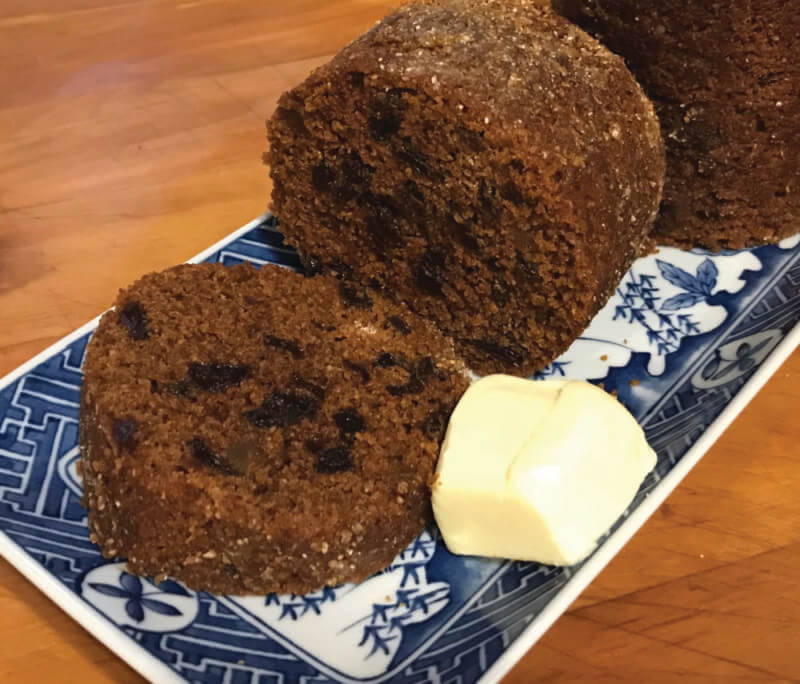
You can still find canned brown bread in just about every supermarket in New England, but the flavor of the mass-produced loaf is usually stale and the texture unpleasant, so homemade is the way to go. If all you’ve ever had is the processed version, you’re in for a treat from your oven.
The bread is made with a blend of grains that compose the early New England flour mix of graham (a type of wheat), rye and cornmeal. Wheat was difficult to grow in the harsh climate and short growing season of the northeast, but rye and corn were steady crops, so this blend of flours worked well for early New Englanders in many recipes.
Brown bread was referred to as a “thirded bread” because of the ratio of the three grains. Molasses was the original sweetener of choice, one that lends moisture as well as flavor to the bread, along with a bit of bitterness, a nutritional boost and the dark color. But honey or maple syrup was used as well, imparting a much lighter color and more subtle notes to the bread.
It’s completely whole grain, too, so it packs a lot of nutrition.
Whether you think of this as a quick bread or a steamed pudding, it is in a category of its own, and it is fun to make. This will serve as a happy sidekick to whatever main course dish you make, a fancy tea service, or part of a spread for a party with the addition of smoked salmon, or crispy cucumbers.
Graham flour is hard to find, so here we used the hard red winter wheat flour and yellow dent corn meal from the Nitty Gritty Grain Company right here in town. Local, organic, we couldn’t get closer to what the Colonists originally made with this combination.
There are no eggs in this quick bread, so if you are cooking vegan, simply sour a plant milk with a bit of vinegar to substitute for the buttermilk. If you are not a fan of raisins, you can substitute dried cranberries or currents.
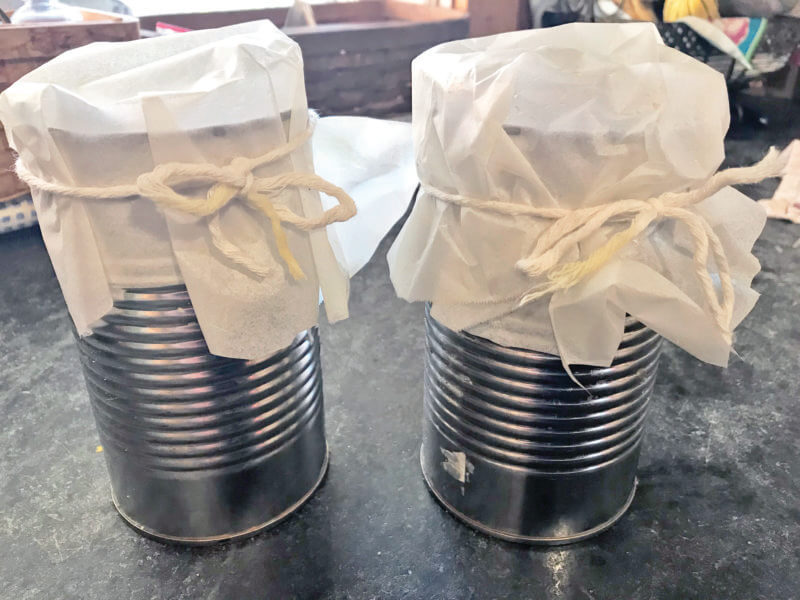
Boston brown bread
First, prepare your “pans.” Generously butter three 25-ounce cans (I use the large chickpea cans; 28-ounce tomato cans are a bit too wide) and then sprinkle well with cornmeal.
Set up your stockpot with a rack in the bottom, canning jar rings or even crumpled-up aluminum foil so the cans do not sit directly on the bottom of the pot, or the bread will overbake on the bottom before the top is set. Put the water kettle on to heat.
In a large bowl, combine:
- 1 cup whole-wheat flour or graham flour
- 1 cup rye flour
- Scant 1 cup cornmeal
- 1 teaspoon baking soda
- 1 teaspoon baking powder
- 1/2 teaspoon salt
- 1/4 teaspoon allspice
- 1 cup raisins
- 2 tablespoons candied ginger, optional
- 2 tablespoons chopped walnuts, optional.
Set the dry ingredients aside. Mix together:
- 1 1/2 cups buttermilk
- 1 cup unsulfured blackstrap molasses
- 1/4 cup brown sugar
- 2 tablespoons melted butter.
Add this to the dry ingredients and mix just until blended. Divide the batter evenly between the three cans, then cover them with a buttered piece of parchment or waxed paper and secure with a little cotton twine. Leave some headroom for expansion. Now they are ready for their steam bath.
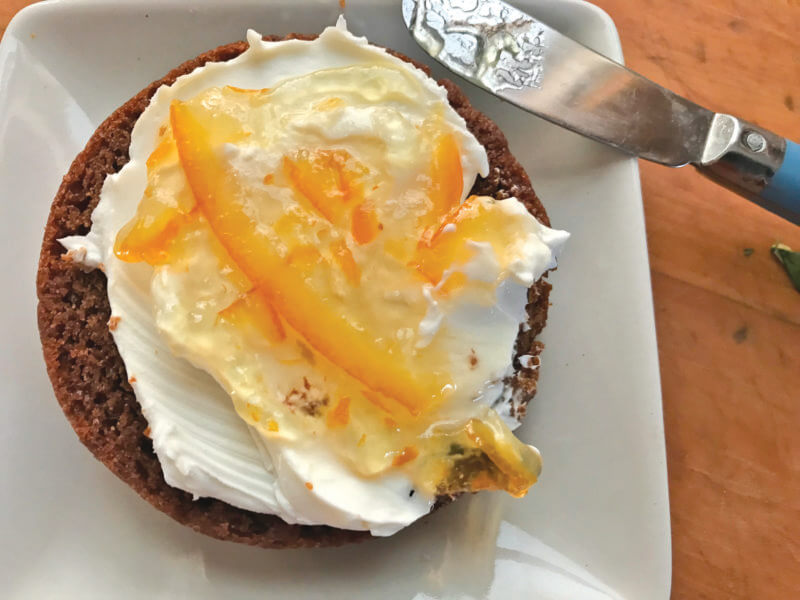
Place the cans in the stockpot and fill with hot water halfway up the cans. Turn on the heat to high to bring to a simmer, then cover the pot and reduce the heat to the lowest setting that will keep the water at a gentle simmer, checking the water level now and then and adding more if necessary. Let steam for 2 to 2 ½ hours, or until firm on the top when touched.
Remove from the water and set on a rack to cool for about 20 minutes, removing the paper hat.
Let the breads cool for a bit before you remove them. Shake out of the can, or, if it is sticking at all, cut off the bottom of the can and push the bread through.
Serve warm or cold. Delicious warm with butter, a bit of local honey or with orange marmalade, cream cheese or both.
Related Stories
Popular Stories
If you enjoy The Charlotte News, please consider making a donation. Your gift will help us produce more stories like this. The majority of our budget comes from charitable contributions. Your gift helps sustain The Charlotte News, keeping it a free service for everyone in town. Thank you.
Andrew Zehner, Board Chair




